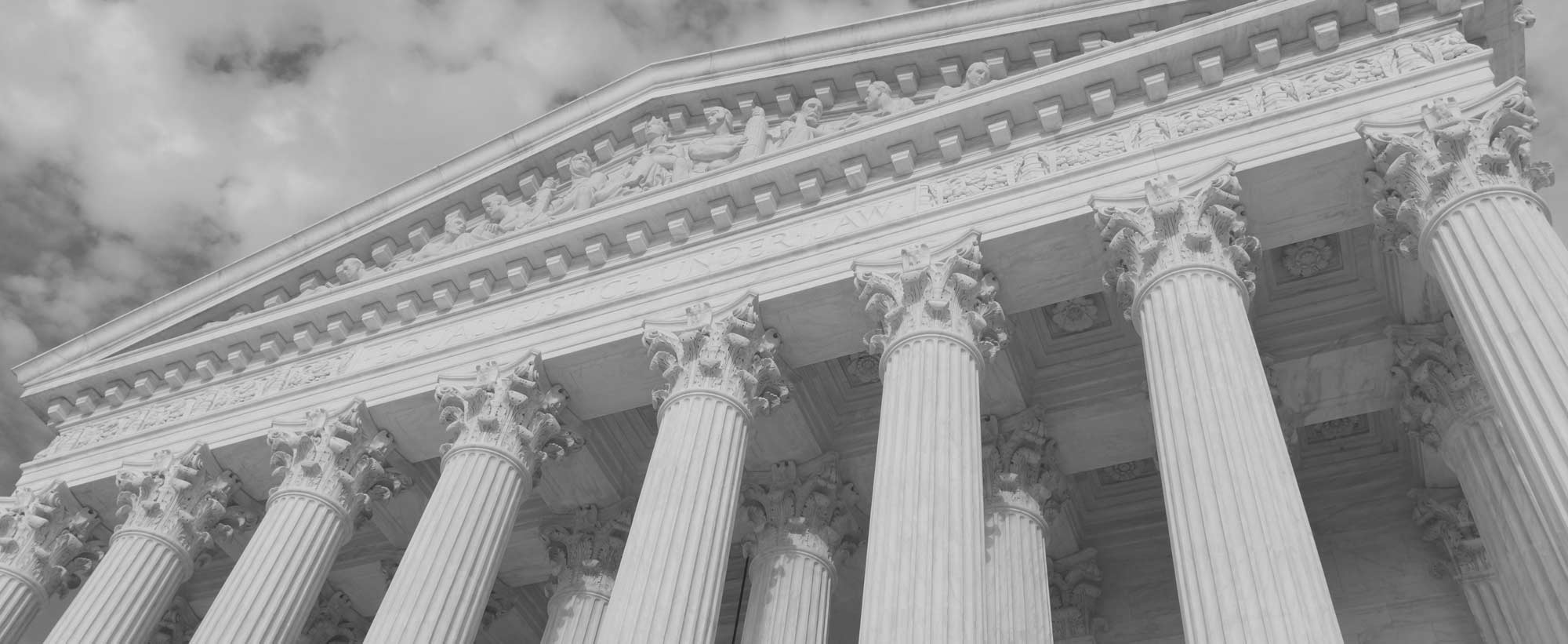A common question during bankruptcy is if social security payments will be garnished to pay off creditors. Below we discuss how social security is handled during both Chapter 7 and Chapter 13 bankruptcies.
What is Social Security?
Before we discuss how Social Security is treated in Chapter 7 and Chapter 13 bankruptcies, it’s important to review what Social Security is.
Social Security is a program that is meant to provide funds as a form of economic security for the public. The United States Social Security program was established in 1935 and provides old age, disability, and survivors insurance, in additional to supplemental security income to elderly or disabled people.
This money is accrued through employers and employees through Social Security taxes. Money raised from this tax program is then primarily used to provide benefits to US citizens who have reached retirement age or are otherwise currently eligible. The amount a citizen receives as their Social Security benefits is based on the amount of Social Security taxes he or she has paid over the course of their working career. This means that those who have had larger incomes tend to get greater Social Security benefits. Social Security also pays a disproportionate amount to people who have earned low incomes.
Chapter 7
When you file a Chapter 7 bankruptcy, almost all of your assets and property are liquidated and thus become property of the bankruptcy estate that is sold to allow you to repay your debts. There are some exceptions to this though.
During your Chapter 7 bankruptcy, a bankruptcy trustee is appointed and given the authority to sell your assets so that you are able to pay your creditors. Just because your assets are being sold, that does not mean that all of your property needs to be sold.
Social Security and Chapter 7
When you apply for Chapter 7 bankruptcy, you are first required to take a means test that is based on the amount of income you receive. It is then determined if you have “the means” to pay back unsecured creditors. If you are receiving Social Security benefits, you are not required to include that source of income during your Chapter 7 means test.
Means Test
The means test will require you disclose all income from all sources, except Social Security benefits, that you have received during the six-month period prior to filing the bankruptcy. This income is then used to calculate what is called a current monthly income, or CMI.
If your CMI is less than the median income for your specific state’s median income for a similar household, you will automatically pass the means test. This means that your household – amount of family members and income – will be compared to what the state has deemed as a similar household’s income. A family of four’s income will be compared to a family of four’s income.
If your CMI is above the median income, that does not mean you fail the means test. In most cases, the bankruptcy petitioner will just need to answer more questions on the means test in order to qualify.
Social Security benefits do not count as income for means test purposes, so you will not be required to list the amount of Social Security income you receive.
Disclose Social Security Income in Budget
While you do not need to disclose your Social Security income in the means test, you will need to disclose the amount on Schedules I of the bankruptcy paperwork. Schedule I and Schedule J are two forms that are needed for Chapter 7 bankruptcy.
Schedule I: snapshot of current income at the time you file bankruptcy.
Schedule J: list of current expenses.
It should be noted that if your budget shows that you are receiving a large amount of disposable income every month, you can still be disqualified from being able to file for Chapter 7. This can happen even if you pass the means test.
Because this can be a complicated process, you should work with a bankruptcy attorney to determine the best form of bankruptcy you should file for.
Often times, people do not qualify for Chapter 7, but do qualify for Chapter 13.
Chapter 13
Chapter 13 bankruptcy is designed to allow you to keep all of your property, but is also determined by the type of property you own. The amount of your nonexempt property affects how much unsecured creditors get paid during your bankruptcy process. And to avoid foreclosure or repossession, you still need to keep up with the payments you make for you secured debt, such as mortgages or car loans. During Chapter 13, you repay creditors in full, or in part, during a Chapter 13 repayment plan. That plan typically lasts from three to five years, and at the end of the repayment period, your debts are discharged.
Differences in Chapter 7 and 13 Bankruptcy
In Chapter 13 bankruptcy, a trustee will not sell your nonexempt assets and distribute the proceeds to your creditors. That’s how it works in Chapter 7 bankruptcy. Rather, you will need to put together a repayment plan that shows your creditors how you plan to pay back some or all of your creditors. You get to keep your property in exchange for paying back a certain amount of the debt you owe. But remember that the more nonexempt assets you have, the more you will need to pay to unsecured creditors.
When you file for Chapter 7 bankruptcy, a trustee takes the nonexempt property, sells it, and uses the proceeds to pay your general unsecured creditors. But because you keep all of your property with Chapter 13, it’s unfair to your unsecured creditors if they do not get paid as much as they would have had you filed for Chapter 7.
Because of this, if you file Chapter 13 and create a repayment plan, you will still need to pay the general unsecured creditors a dividend at least equal to the value of your nonexempt assets. So if you have a large amount of nonexempt property, you hay have to repay the unsecured debts in full.
Chapter 13 and Social Security
While more courts are increasingly allowing debtors to keep Social Security payments in Chapter 13 bankruptcy, it will depend on where you file for bankruptcy.
All income, including your Social Security income, needs to be disclosed on your Chapter 13 bankruptcy petition and schedules. All disposable income is required to be contributed to the repayment plan. The higher the amount of disposable income you have, the more you are required to pay unsecured creditors.
Where You File
Federal appellate courts have ruled that social security income should not be included in your current monthly income (CMI) if you live in the following states: Arkansas, Colorado, Iowa, Kansas, Kentucky, Louisiana, Maryland, Michigan, Mississippi, Missouri, Nebraska, New Mexico, North Carolina, North Dakota, Ohio, Oklahoma, South Carolina, South Dakota, Tennessee, Texas, Utah, Virginia, West Virginia, or Wyoming.
Working with a Bankruptcy Attorney
When you decide to file bankruptcy, you should consider working with an attorney. As you can see from the above, there are many factors that need to be considered during your petition. A bankruptcy attorney can advise you on the following:
- the type of bankruptcy you should file
- how bankruptcy can help you
- what to expect during the process, and
- any potential difficulties they see with your case
Additionally, you should be able to address any questions or concerns you might have.
The Bankruptcy Process
Filing for bankruptcy requires you to fill out a packet of forms, including the Schedule I and Schedule J discussed above. Your bankruptcy attorney will have specialized software that helps to guide you through the process and also ensures that everything is prepared for the court. You will be required to provide information about your income, expenses, assets, and debts. Working with an attorney will ensure that the information on these forms is filled out accurately, and filed correctly.
Bankruptcy Hearings
You will need to attend a meeting of creditors after you file for bankruptcy. Depending on your specific filing, you might need to attend additional hearings. Your lawyer will advise you on if you need to be in attendance, or if they are able to represent you without you needing to be there, as sometimes you will not be required to be in attendance.
At all times your lawyer will help you to understand the process, as well as ensure that the court has all the information it needs to obtain from you, in addition to any forms.
Working with a Bankruptcy Attorney
Facing debt can be overwhelming. The bills can continue to pile up and the creditors can continue to harass you unless you take responsibility and take action. Working with a bankruptcy attorney to guide you through the process of debt consolidation and/or bankruptcy is the first step to getting back on to solid financial footing. The laws regarding bankruptcy can also be confusing. Because of this, it’s highly advised that you work with a bankruptcy attorney such as the ones at Resnilk Hayes Moradi that can walk you through the process and clarify any questions or concerns you might have. There can be a lot of questions during this extremely stressful time and we are happy to help you plan how to move forward with a solid financial future.
5455 Wilshire Blvd STE12000
Los Angeles, CA 90036
Phone: (213) 699-3055
https://ibankruptcyattorneys.com



